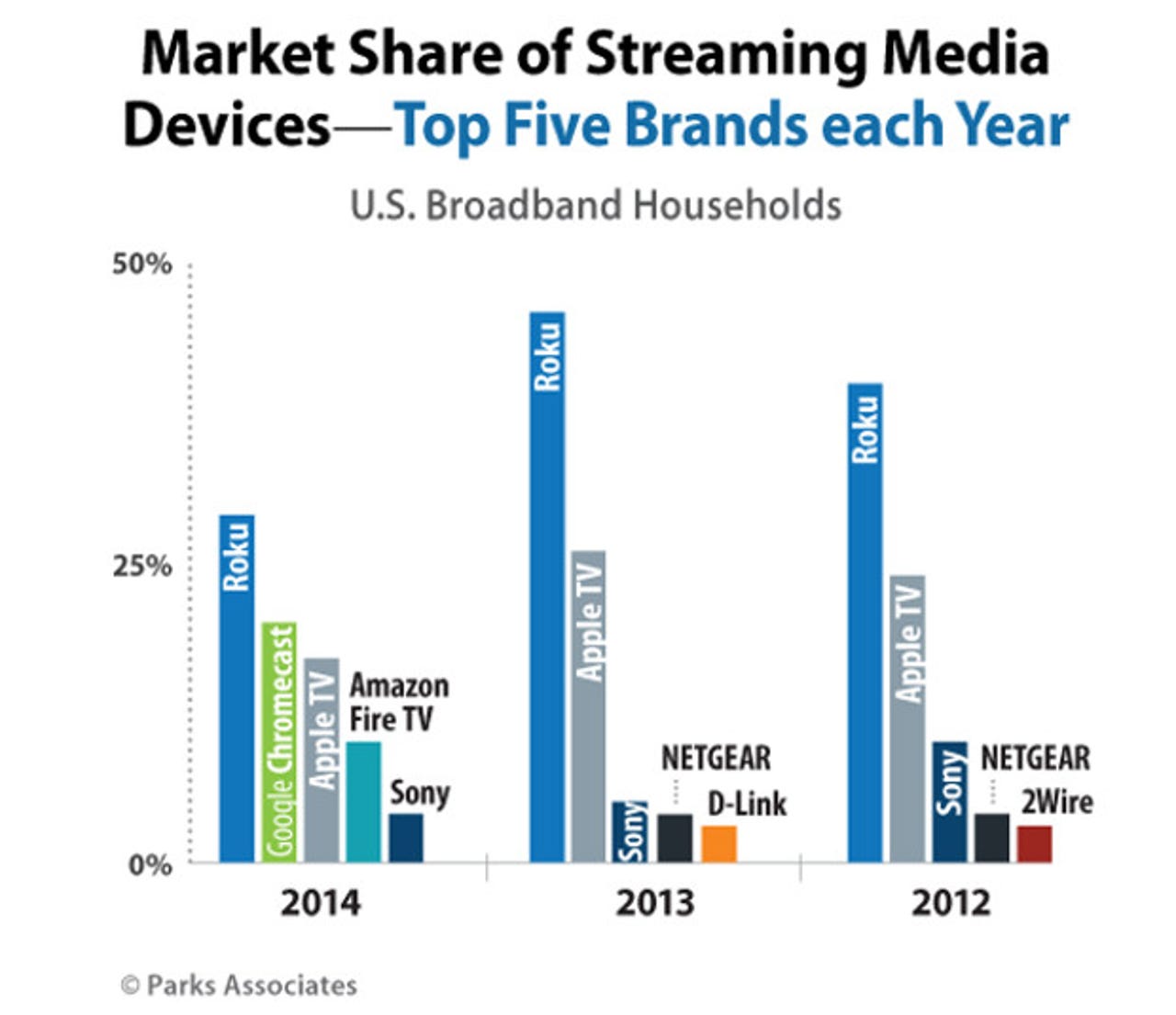Reports show it's becoming a cord cutter's world

Once upon a time, we watched three or four fuzzy over-the-air (OTA) TV channels with a pair of rabbit ears. Then, we got cable, and after that we got satellite — hundreds of channels and nothing to watch with an ever-increasing bill. Now, many of us are moving to à la carte Internet selections.

How many of us? According to Parks Associates, 10 percent of US broadband households have already purchased a streaming media device in 2014, and the holiday buying season has only just begun!
Parks isn't the only one seeing this shift. Traditional television monitoring company Nielsen told The Wall Street Journal (WSJ), "Viewership of traditional television dropped nearly 4 percent last quarter, as online video streaming jumped 60 percent."
In the last 12 months, by Nielsen's count (PDF), "Americans increased streaming of web video to nearly 11 hours a month, up from nearly seven a year earlier." That's a low estimate.
While Nielsen's Dounia Turrill, senior VP of Client Insight, wrote in the report that, "The growing penetration of new devices and the popularity of subscription-based streaming services, time-shifted and over-the-top viewing — as well as cord cutting and cord shaving — are fundamentally changing the TV industry, Nielsen did not measure cord-cutting traffic due to Roku, Apple TV, gaming consoles, and the like. So, the total online video time consumed is actually higher, probably much higher, than Nielsen's numbers state.
So, where are all cord-cutter video hours going? According to Park Associates, "Roku is still the leading brand, with 29 percent of sales, but Google Chromecast, 20 percent, has supplanted Apple TV, 17 percent, in second place. New entrant Amazon Fire TV is in fourth place, with 10 percent."
Parks predicts that this pace will only continue to speed up, since "consumer content choices are also increasing, with Showtime and Sony planning to launch their own [Internet] video services to compete with Netflix and HBO".
Looking ahead, Parks Associates' research director Barbara Kraus predicted in a statement that, "More than 25 percent of US broadband households will have a streaming media player by 2015, and by 2017, there will be nearly 50 million streaming media players sold globally."
Personally, I think the adoption rate will be even faster than that. Smartphones and tablets are close to saturating the gadget market, while Internet TV devices still have plenty of room to expand. At the same time, with CBS, HBO, Showtime, and other networks all offering Internet TV options in early 2015, there will be more content than ever for a TV-hungry audience that appears eager to cut the cable cord.
Related stories:
- Look out, cable TV, Netflix! Here comes HBO to the Internet
- Netflix CEO boasts 'minor milestone' revenue triumph over HBO
- Amazon pulls off coup against Netflix with HBO deal
- Level 3 heats up the Netflix, Verizon Internet war
- The Internet belongs to YouTube and Netflix
- Six Clicks: The best Internet TV gadgets of 2014